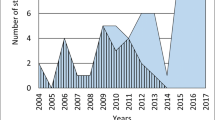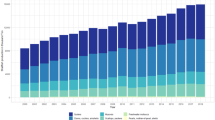Abstract
Goal and Scope
The goal of this study is to explore the potentials and limitations of using LCA as the basis for setting ecolabelling criteria in developing countries. The practicality of using LCA for this purpose, as required by ISO 14020, has been criticised as lacking in transparency and scientific rigour. Furthermore, ecolabelling is not widespread in developing countries. The application of LCA has therefore been illustrated by using the specific case of shrimp aquaculture in Thailand, as a basis for ecolabelling criteria for a typical product intended for export from a developing country.
Method
For the LCA case study, the functional unit is the standard consumer-package size, containing 1.8 kg of frozen shrimp produced by conventional intensive aquaculture in Thailand, subject to an appropriate environmental management system. The impact assessment method used in this study is CML 2 Baseline 2000.
Results
According to the results from the LCA study, farming appears to be the key life cycle stage generating the most significant environmental impacts: abiotic depletion and global warming, which arise mainly from the use of energy; and eutrophication caused by wastewater discharged from the shrimp ponds. It is possible to cover these impacts by quantitative ecolabelling criteria. Other important impacts could not be quantified by the LCA: depletion of wild shrimp broodstock, impacts of trawling on marine biodiversity and the choice of suitable farm sites. These impacts, which are also related to the farming stage, must be covered by 'hurdle criteria'.
Conclusions
and recommendations. For the present case, LCA provides a basis for quantifying a number of important ecolabelling criteria related to the use of abiotic resources and to emissions. Other important issues, connected with the use of biotic natural resources and land, are not quantifiable by current LCA methodology, but were also revealed and clarified by using an LCA framework for the analysis. Thus, focussing the assessment on life cycle considerations, as required by ISO 14024, was effective in identifying all key environmental issues. In the light of this case study, main limitations and barriers associated with the application of LCA to setting ecolabelling criteria particularly in developing countries are discussed, including recommendations on how to overcome them.
Similar content being viewed by others
Author information
Authors and Affiliations
Corresponding authors
Rights and permissions
About this article
Cite this article
Mungkung, R., Udo de Haes, H. & Clift, R. Potentials and Limitations of Life Cycle Assessment in Setting Ecolabelling Criteria: A Case Study of Thai Shrimp Aquaculture Product (5 pp). Int J Life Cycle Assessment 11, 55–59 (2006). https://doi.org/10.1065/lca2006.01.238
Received:
Accepted:
Published:
Issue Date:
DOI: https://doi.org/10.1065/lca2006.01.238




